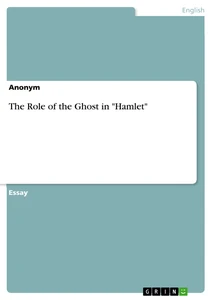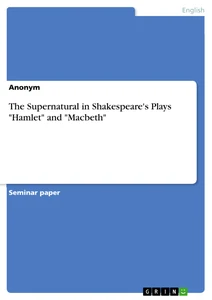First things first:
- Plot: “Hamlet” is about a royal intrigue.
- Main characters: Hamlet, Claudius, Ophelia.
- Main Themes: Revenge, perception and consciousness, sexuality, and incest.
Summary
The protagonist is Hamlet, the Prince of Denmark. His father, the King, has recently died. Shortly after, his mother, Gertrude, marries his uncle Claudius, who now rules the country. The couple shows little sympathy for Hamlet’s grief and melancholy. Strange things begin to happen in the castle, with several servants claiming to have seen the ghost of the late King. Eventually, Hamlet encounters the ghost himself, who reveals that Claudius poisoned him to take the throne. Shocked, Hamlet vows revenge. He pretends to be mad while secretly investigating the accusations. The court assumes his odd behavior stems from his breakup with Ophelia and his mother’s remarriage, and they suspect nothing.
When a group of traveling actors arrives at the court, Hamlet sees an opportunity. He persuades them to perform a play that mirrors his father’s murder. As expected, Claudius recognizes his crime in the play and reacts emotionally.
This leads to a confrontation between Hamlet and Gertrude, overheard by Polonius—Ophelia’s father and the court’s secretary—who is hiding behind a curtain. Hamlet realizes there’s a spy and stabs Polonius. Claudius then orders Hamlet to go to England, secretly instructing the English king to kill him. Ophelia, devastated by the loss of her father and Hamlet’s rejection, goes mad and drowns in a river. Her brother, Laertes, returns from studying in France and teams up with Claudius to avenge his family.
Hamlet returns to Denmark after discovering the king’s plot against him. Upon arrival, he is challenged to a duel by Laertes. The duel is a trap—Laertes’ sword is poisoned, and there’s also a cup of poisoned wine as a backup plan. Hamlet is wounded by the poisoned sword but manages to wound Laertes with it as well, sealing both their fates. Gertrude drinks the poisoned wine and dies. With his last strength, Hamlet forces Claudius to drink the poison, achieving his revenge but paying with his life.
Characters
Hamlet
The son of the late king and Queen Gertrude. A student, Hamlet is philosophical, introspective, and often melancholic. His father’s death and his mother’s marriage to Claudius make him increasingly bitter and obsessed with avenging his father. Throughout the play, he acts impulsively and even contemplates suicide, as seen in the famous “to be or not to be” soliloquy.
Claudius
The brother of the deceased king and Hamlet’s uncle, who becomes his stepfather. Initially, Claudius tries to build a relationship with Hamlet, but when this fails, his true nature is revealed. The poison he uses to kill the king symbolizes his manipulative words, which he uses to control those around him.
Ophelia
The daughter of Polonius and sister to Laertes, as well as Hamlet’s love interest. When her father doubts the sincerity of Hamlet’s love, suspecting it is purely physical and a threat to her honor, she agrees to distance herself from Hamlet. She is later used as a pawn to uncover Hamlet’s mental state. Like Gertrude, Ophelia is subject to the will of the men in her life, embodying the role of women in a patriarchal society.
Concepts and Interpretations
Revenge
Revenge drives Hamlet throughout the play, influencing his actions. In typical revenge tragedy fashion, especially in Shakespeare’s works, the protagonist is often “controlled” by an external force—in this case, the ghost of Hamlet’s father. An interesting point of analysis is the moments when Hamlet has the opportunity to kill Claudius but hesitates.
Perception and consciousness
The play frequently raises questions about how much the characters’ perceptions align with reality. It all starts with the ghost, seen by multiple people but supposedly only speaking to Hamlet. Hamlet pretends to be mad, but his behavior gives others reason to genuinely doubt his sanity. Yet, he is not the only character pretending to be something they’re not.
Sexuality and incest
A psychoanalytic interpretation suggests that the ghost represents Hamlet’s repressed desire to take his uncle’s or even his father’s place beside his mother, even if it means their deaths. This interpretation is controversial but has been hinted at in various performances.
Good to know
- The play is divided into five acts, a structure added by later editors, not by Shakespeare himself.
- The first performance took place in London in 1602.
- There are theories that Shakespeare wrote “Hamlet” as a way of processing the death of his son, Hamnet. This idea is explored in Maggie O’Farrell’s bestselling novel “Hamnet” (2020), though the book does not claim historical accuracy.
- Originally, “Hamlet” was Shakespeare’s longest play. It has been shortened several times since its first publication.
- In the original version, the most famous quote was not “to be or not to be: that is the question”, but “to be or not to be, Ay, there’s the point”.
Our recommendations:
Do you like our magazine? Then sign up for our GRIN newsletter now!













